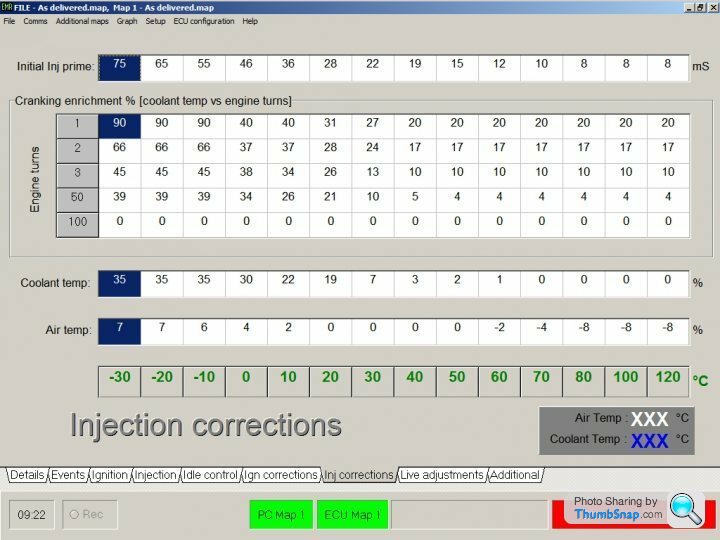Aftermarket Ecu warm up enrichment
Discussion
Belle427 said:
yes ive currently disabled the idle valve above 70 degrees, ive set the idle speed via the throttle stop screw and closed down the idle by pass screw.
Ive found the engine is more stable without input from it after warm up.
Unfortunately Megasquirt does not have the scatter spark feature.
I think that Idle Advance in Megasquirt is the same thing. It can be used independantly to advance the ignition based on RPM or engine load. It can also be used to assist closed loop idle by linking to the PID conditions.Ive found the engine is more stable without input from it after warm up.
Unfortunately Megasquirt does not have the scatter spark feature.
Edited by Belle427 on Saturday 4th July 14:43
I wouldn't give up on the idle valve. Once you are happy with the way idle is working, you can move on to closed loop idle. This obviously maintains a constant idle speed under different loads, so also allows the car to idle along, uphill and down, foot off the pedal just as modern cars do.
I use closed loop idle and independant Idle Spark Advance. The advance feature is very fast acting, so fills in the gap whilst the closed loop idle catches up.
It can all be a bit tricky to set up but we'll worth the effort.
O mage said:
ChimpOnGas said:
Sounds like you're on it 
Whats always amazed me is just how smooth a well set up 14CUX will idle at 14.7:1, this proves this rather ancient and crude engine can be happy idling at stoich but I've never been 100% happy with it, don't get me wrong I can idle at 14.7:1, its just my engine is noticeably smoother at 13.8:1.
I guess the real difference is with the 14CUX you're suck at stoich so there's no seeing how much smoother it could be if you ran it a little richer, anyway the fuel economy difference is minuscule, the only reason you'd run 14.7:1 is to lower emissions and if I was worried about that I wouldn't have entirely de-catted the car.
My only other observation is my engine definitely idles smoother on gas, don't get me wrong its smooth on petrol, just even smoother on LPG which I attribute to the fuel mixing better with air. Saying that I have a set of four port petrol Bosch 0 280 156 045 injectors to fit which at my new 20% higher fuel pressure will be sure to deliver better fuel atomization, by replacing the old stock FPR with one from an early/mid 90's BMW 3 series my fuel pressure went up from 37psi to 44psi, well worth the £28.00 this new direct fit reg cost me.
https://www.ebay.co.uk/itm/Fuel-Pressure-Sensor-FD...
Increasing the fuel pressure by 20% and forcing the fuel at 44psi through the four tiny ports used on the superior Bosch 0 280 156 045 injectors will for sure deliver improved emulsification of petrol and air compared with my old two port Vecra injectors running at 37psi, this should improve cold starts too and serve to redress the balance between my petrol & LPG idle quality.
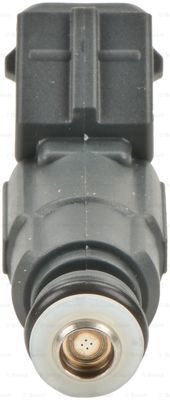
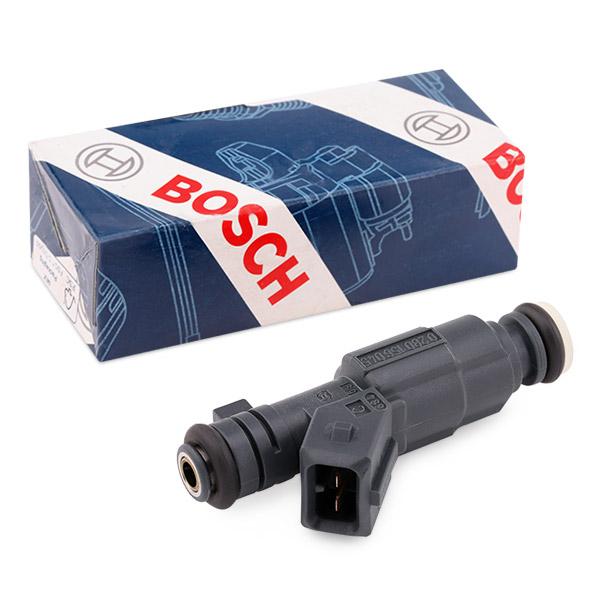
As you can probably tell I'm somewhat obsessive about how my TVR idles and runs
Hi, what is the coil set up on these systems are they generic or bespoke to the system. And are they fired conventionally ie switched by earth only? 
Whats always amazed me is just how smooth a well set up 14CUX will idle at 14.7:1, this proves this rather ancient and crude engine can be happy idling at stoich but I've never been 100% happy with it, don't get me wrong I can idle at 14.7:1, its just my engine is noticeably smoother at 13.8:1.
I guess the real difference is with the 14CUX you're suck at stoich so there's no seeing how much smoother it could be if you ran it a little richer, anyway the fuel economy difference is minuscule, the only reason you'd run 14.7:1 is to lower emissions and if I was worried about that I wouldn't have entirely de-catted the car.
My only other observation is my engine definitely idles smoother on gas, don't get me wrong its smooth on petrol, just even smoother on LPG which I attribute to the fuel mixing better with air. Saying that I have a set of four port petrol Bosch 0 280 156 045 injectors to fit which at my new 20% higher fuel pressure will be sure to deliver better fuel atomization, by replacing the old stock FPR with one from an early/mid 90's BMW 3 series my fuel pressure went up from 37psi to 44psi, well worth the £28.00 this new direct fit reg cost me.
https://www.ebay.co.uk/itm/Fuel-Pressure-Sensor-FD...
Increasing the fuel pressure by 20% and forcing the fuel at 44psi through the four tiny ports used on the superior Bosch 0 280 156 045 injectors will for sure deliver improved emulsification of petrol and air compared with my old two port Vecra injectors running at 37psi, this should improve cold starts too and serve to redress the balance between my petrol & LPG idle quality.


As you can probably tell I'm somewhat obsessive about how my TVR idles and runs

http://www.extraefi.co.uk/products/RV8_kits.html
Im not 100% on the firing method but im guessing they are negative triggered as they have their own fused ignition supply.
Dougal9887 said:
Belle427 said:
yes ive currently disabled the idle valve above 70 degrees, ive set the idle speed via the throttle stop screw and closed down the idle by pass screw.
Ive found the engine is more stable without input from it after warm up.
Unfortunately Megasquirt does not have the scatter spark feature.
I think that Idle Advance in Megasquirt is the same thing. It can be used independantly to advance the ignition based on RPM or engine load. It can also be used to assist closed loop idle by linking to the PID conditions.Ive found the engine is more stable without input from it after warm up.
Unfortunately Megasquirt does not have the scatter spark feature.
Edited by Belle427 on Saturday 4th July 14:43
I wouldn't give up on the idle valve. Once you are happy with the way idle is working, you can move on to closed loop idle. This obviously maintains a constant idle speed under different loads, so also allows the car to idle along, uphill and down, foot off the pedal just as modern cars do.
I use closed loop idle and independant Idle Spark Advance. The advance feature is very fast acting, so fills in the gap whilst the closed loop idle catches up.
It can all be a bit tricky to set up but we'll worth the effort.
I run a slightly higher idle speed, just under 1000 rpm and currently have my timing set at 18 degrees which may be a little high but the engine seems to like it.
To be fair the car goes like a stabbed rat up to the limiter at 6250 so there isnt a lot wrong with it!
Id like to get perfection on the cold start but am not that concerned about it in the grand scheme of things.
Edited by Belle427 on Sunday 5th July 06:25
Belle427 said:
Id like to get perfection on the cold start but am not that concerned about it in the grand scheme of things.
Out of interest, how many milliseconds of key on pre-cranking priming pulse do you run? In my experience the Rover V8 loves a good sizable dose of pre-cranking cold start fuel, the Canems system limits the priming pulse to 16ms for every key on cycle which is clearly insufficient. I know this for a fact as five key on/off cycles gives me outstanding instant cold starts but one shot at the maximum of 16ms is simply not enough, this leaves me me to fall back on cranking temp correction which don't get me wrong still brings the engine to life but only after 3 seconds of cranking.
I measure cold start performance on the number of revolutions the engine must go through before a nice clean start is achieved, the fewer the revolutions the better the cold start. It does therefore frustrate me that while I've proved all my engine needs is more pre-cranking fuel (priming pulse) the Canems system restricts me to the insufficient dose of16ms, priming pulse is very different to the additional fuel introduced under cold start cranking and the RV8 engine definitely benefits from a good healthy dose of fuel before the engine is cranked.
Spray in that generous dose of fuel before cranking and my Chimaera bursts into life like a modern Toyota, give it one dose at the Canems maximum of 16ms and I'm falling back on the cranking temperature correction. Cranking temperature correction is important, but the engine obviously needs to be cranking to benefit from it so needs go through a few revolutions before sufficient fuel is introduced and the start occurs.
Introduce plenty of fuel before the crank in the order of 80ms, and those joyous snappy instant cold starts bring a smile to my face reminding me of those wonderful instantaneous cold starts I could achieve when I was tuning engines running a carburetor. Of course the way a carb achieves this is by virtue of the huge amount of fuel it crudely dumps down the engine's neck, injection is meant to be more versatile than a carb so its a real shame the Canems system restricts you to 16ms of priming pulse. I've emailed David Hampshire at Canems asking him to lift this 16ms priming pulse ceiling so I don't need to go through the rather ridiculous five key on/off cycles, sadly once again David has ignored my message, this is a real shame as it would probably only take him minutes to tweak the software.
My current thinking is my raised fuel pressure and four port injectors will help, but the real solution will only come with a far larger dose of pre-cranking fuel, I'd love to know what the 14CUX throws in but I'm damn sure it'll be way more than maximum of 16ms the Canems system limits you to. With Canems support not being forthcoming it's once again time for me find my own solution, my current thinking being a Rover SD1 plenum will solve the challenge in a stroke. An SD1 plenum allows me to use a good old cold start injector plumbed into the fuel rial by simply de-coring the Shraeder valve, a timer relay set at 1 second triggered by key on and grounded through a cold start switch will ensure a nice spray of fuel over the velocity stacks but only when engine temps are below the cold start switch open circuit value.
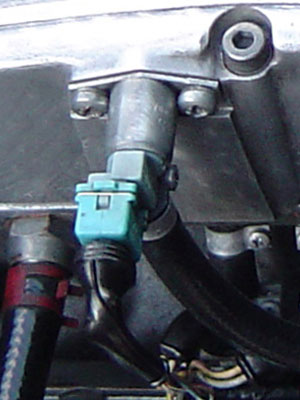
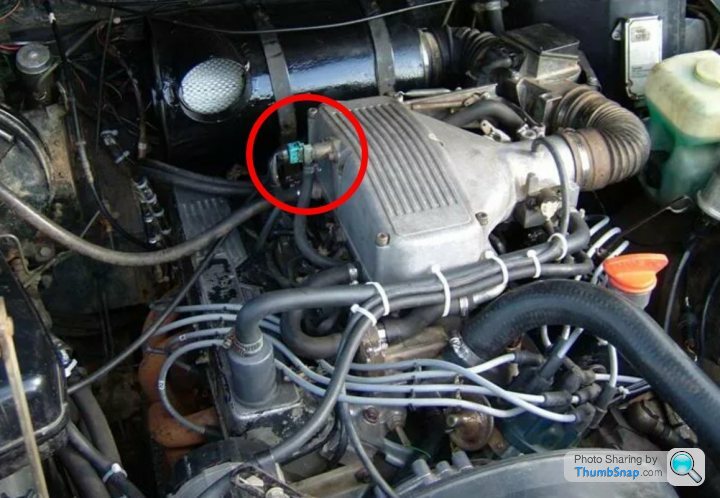
Heres a good old cold start injector doing it's thing under cranking, as you can see a cold start injector is a very effective way to give me that additional priming pulse my engine clearly needs.
https://www.youtube.com/watch?v=cff0riuswRI
The video shows it spraying under cranking, in my case all I need is a 1 second pre-cranking pulse to throw a lovely cloud of atomised fuel into the plenum and over the velocity stacks. I absolutely guarantee you with this mist of pre-cranking fuel my Chimaera will burst into life the moment the ECU receives the cranking signal and gives me spark, basically one complete engine revolution which is more or less instant instead of the current three full seconds of cranking currently needed.
ChimpOnGas said:
Belle427 said:
Id like to get perfection on the cold start but am not that concerned about it in the grand scheme of things.
Out of interest, how many milliseconds of key on pre-cranking priming pulse do you run? In my experience the Rover V8 loves a good sizable dose of pre-cranking cold start fuel, the Canems system limits the priming pulse to 16ms for every key on cycle which is clearly insufficient. I know this for a fact as five key on/off cycles gives me outstanding instant cold starts but one shot at the maximum of 16ms is simply not enough, this leaves me me to fall back on cranking temp correction which don't get me wrong still brings the engine to life but only after 3 seconds of cranking.
I measure cold start performance on the number of revolutions the engine must go through before a nice clean start is achieved, the fewer the revolutions the better the cold start. It does therefore frustrate me that while I've proved all my engine needs is more pre-cranking fuel (priming pulse) the Canems system restricts me to the insufficient dose of16ms, priming pulse is very different to the additional fuel introduced under cold start cranking and the RV8 engine definitely benefits from a good healthy dose of fuel before the engine is cranked.
Spray in that generous dose of fuel before cranking and my Chimaera bursts into life like a modern Toyota, give it one dose at the Canems maximum of 16ms and I'm falling back on the cranking temperature correction. Cranking temperature correction is important, but the engine obviously needs to be cranking to benefit from it so needs go through a few revolutions before sufficient fuel is introduced and the start occurs.
Introduce plenty of fuel before the crank in the order of 80ms, and those joyous snappy instant cold starts bring a smile to my face reminding me of those wonderful instantaneous cold starts I could achieve when I was tuning engines running a carburetor. Of course the way a carb achieves this is by virtue of the huge amount of fuel it crudely dumps down the engine's neck, injection is meant to be more versatile than a carb so its a real shame the Canems system restricts you to 16ms of priming pulse. I've emailed David Hampshire at Canems asking him to lift this 16ms priming pulse ceiling so I don't need to go through the rather ridiculous five key on/off cycles, sadly once again David has ignored my message, this is a real shame as it would probably only take him minutes to tweak the software.
My current thinking is my raised fuel pressure and four port injectors will help, but the real solution will only come with a far larger dose of pre-cranking fuel, I'd love to know what the 14CUX throws in but I'm damn sure it'll be way more than maximum of 16ms the Canems system limits you to. With Canems support not being forthcoming it's once again time for me find my own solution, my current thinking being a Rover SD1 plenum will solve the challenge in a stroke. An SD1 plenum allows me to use a good old cold start injector plumbed into the fuel rial by simply de-coring the Shraeder valve, a timer relay set at 1 second triggered by key on and grounded through a cold start switch will ensure a nice spray of fuel over the velocity stacks but only when engine temps are below the cold start switch open circuit value.


Heres a good old cold start injector doing it's thing under cranking, as you can see a cold start injector is a very effective way to give me that additional priming pulse my engine clearly needs.
https://www.youtube.com/watch?v=cff0riuswRI
The video shows it spraying under cranking, in my case all I need is a 1 second pre-cranking pulse to throw a lovely cloud of atomised fuel into the plenum and over the velocity stacks. I absolutely guarantee you with this mist of pre-cranking fuel my Chimaera will burst into life the moment the ECU receives the cranking signal and gives me spark, basically one complete engine revolution which is more or less instant instead of the current three full seconds of cranking currently needed.
Mine is non existent at the moment for that reason, ive left it as the base map because i wasnt sure how high to go before causing issues.
At the moment my engine cranks for around 3 seconds before bursting into life.
I think megasquirt will allow a maximum of 65 ms.
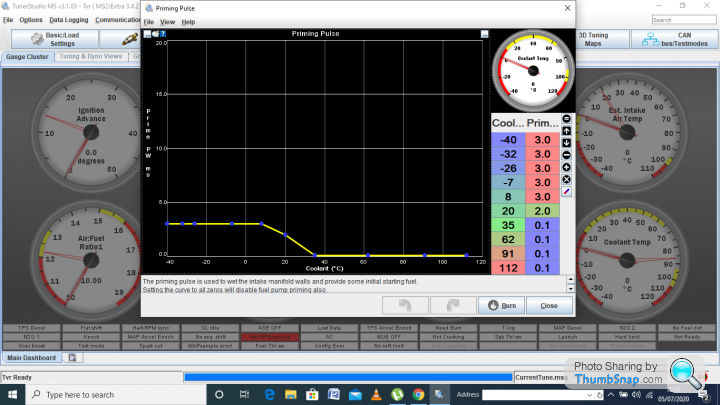
Edited by Belle427 on Sunday 5th July 10:14
This is really interesting.
As I have an MBE ECU with no stepper motor I’ve often wondered how Powers manage to get it to start in all conditions so effectively.
I would agree my engine fires on the first firing stroke of its cycle. It’s only extreme conditions like -7d and 6 inches of snow and ice allover the car it takes around 3 seconds to fire.
Basically 3 seconds is a long time actually, not so much in ice cold conditions as oils thick, spark slightly diminished, wet air etc but I can honestly say my car since MBE Ecu install she starts instantly usually. I drove it through 2 winters to prove it too,,, f ked my chassis up but all in the name of science lol!
ked my chassis up but all in the name of science lol!
As I have an MBE ECU with no stepper motor I’ve often wondered how Powers manage to get it to start in all conditions so effectively.
I would agree my engine fires on the first firing stroke of its cycle. It’s only extreme conditions like -7d and 6 inches of snow and ice allover the car it takes around 3 seconds to fire.
Basically 3 seconds is a long time actually, not so much in ice cold conditions as oils thick, spark slightly diminished, wet air etc but I can honestly say my car since MBE Ecu install she starts instantly usually. I drove it through 2 winters to prove it too,,, f
 ked my chassis up but all in the name of science lol!
ked my chassis up but all in the name of science lol! If all else fails
A multi position switch and resistors can be wired into the ECU temperature sensor circuit to give the ultimate fuelling for hot, cold or whatever
A cranking activated relay and resistor can be wired into the ECU temperature sensor circuit to alter fuelling at start-up
An ignition activated relay,resistor and timer can also be wired into the ECU temperature sensor circuit to alter fuelling over a chosen time
A multi position switch and resistors can be wired into the ECU temperature sensor circuit to give the ultimate fuelling for hot, cold or whatever
A cranking activated relay and resistor can be wired into the ECU temperature sensor circuit to alter fuelling at start-up
An ignition activated relay,resistor and timer can also be wired into the ECU temperature sensor circuit to alter fuelling over a chosen time
Edited by Penelope Stopit on Sunday 5th July 12:01
Belle427 said:
At the moment my engine cranks for around 3 seconds before bursting into life.
I think megasquirt will allow a maximum of 65 ms.

Cool, thanks for sharing I think megasquirt will allow a maximum of 65 ms.


I really wish I could dose my engine with 65ms of priming pulse, MegaSquirt offer this level of fuel for a reason and I'd put money on the 14CUX serving up something similar too, one thing is also for sure the Rover V8 absolutely loves a healthy dose of pre-cranking fuel. The Canems priming pulse ceiling of 16ms is stupid, what's David Hampshire worried about? If the concern is hydraulically locking the engine I only have do the maths on my injector flow rates (x8) to prove an 80ms ceiling would be perfectly safe,16ms is simply way too little fuel!
Frustratingly crank signal acquisition and so first initiation of spark on the Canems system is actually super fast, especially since I fitted a genuine Ford crank position sensor and gaped it correctly, so its only the lack of priming fuel that stops those lovely instantaneousness cold starts. I currently cycle the key five times which does the trick but it's ridiculous I should have to do this, as an experiment and to further prove the point I've also squirted a few CCs of raw fuel directly in the plenum down the old distributor ported vacuum advance nipple on the throttle body using a fine teat pipet, once again like cycling the key five times this raw fuel delivers lovely instant cold starts, but is obviously even less convenient.
I'm afraid with no support from Canems to lift the priming pulse from the insufficient 16ms to a far more reasonable upper limit of 80ms my only option is to fit an old school cold start injector, while these are a throw back to the old K-Jetronic system I studied at college almost 30 years ago cold start injectors do work brilliantly. A Rover SD1 plenum is also machined, drilled and tapped to accept a cold start injector sat in the perfect spot to spray a cloud of atomised fuel into the plenum and directly over the velocity stacks right where I need it.
It's a work around, but a neat OEM looking work around that I 100% know and have completely proved will absolutely work a treat!
NB: Cold start yesterday using 5 x 16ms priming pulses and not touching the throttle at all.....
https://www.youtube.com/watch?v=PPW2U8bzklQ
The priming pulse is to evacuate the injector of any air (purc bubbles etc) not to wall wet, on the MS for every time you cycle the ign ON/OFF (no cranking) along with the F.P this function comes into play so using big figures (just not necessary) gives potential to hydro lock the engine  unlikely but possible all the same, you want only want fuel inj during cranking and this is not the function of Priming Pulse
unlikely but possible all the same, you want only want fuel inj during cranking and this is not the function of Priming Pulse
 unlikely but possible all the same, you want only want fuel inj during cranking and this is not the function of Priming Pulse
unlikely but possible all the same, you want only want fuel inj during cranking and this is not the function of Priming Pulse While I appreciate priming pulse is used to purge the fuel rail, which may prove helpful on hot starts as modern fuels have a much lower boiling point than fuels of old, this is not it's only purpose.
Priming pulse is indeed used to wet the inlet manifold which aids cold starts, below is an extract taken directly from the Canems injection tuner manual that covers this very point.
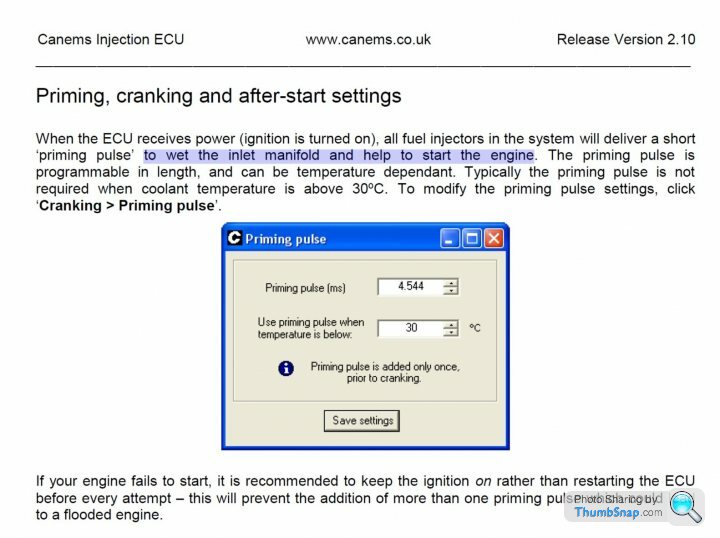
Further proof lies in practical experience and extensive experimentation.
For example if I increase cranking temperature correction no improvement is made, however if I increase priming pulse by cycling the key more than once to the maximum of 5 x 16ms priming pulses or even manually introducing fuel ..... the engine fires much much sooner and cleaner.
What's actually taking place here is the exact same function you deploy when cold starting an cold engine equipped with Weber DCOE carburetion, 'Doppio Corpo Orizzontale E' in Italian that translates as 'double body horizontal'. A sharp stab of the throttle pedal on this type of carb, that typically does not offer a traditional cold start enrichment system (a choke), activates the accelerator pump, the process to achieve cold starts on a vehicle equipped with such carburetion is...
Three sharp stabs of the throttle, followed by the crank to start - This is your priming pulse.
Having owned and tuned many vehicles equipped with Weber DCOE carburetion I can assure everyone if you fail to follow this procedure to wet the inlet manifold a decent cold start will not be forthcoming, I can also confirm the exact same principles of priming directly translate to injection. Each of my 16ms priming pulses on my Canems sytem are performing the exact same function as each stab of the throttle on the Weber equipped engine, actually one accelerator pump dose of fuel from the carb will be quite a bit more fuel than a 16ms dose from my eight 220cc Vectra injectors with 43psi behind them.
There's lots of information out there to further confirm the fact that priming pulse is indeed used to wet the inlet manifold before the cold crank.....
https://motorsport-electronics.co.uk/onlinehelp/ht...
However, having formerly studied the Bosch K-Jetronic injection system at Norwich City College in 1993 under the guidance of an instructor who was also a Bosch qualified injection engineer, I can again confirm the cold start injector used on this system will also fire when the coolant temperature rule is met on 'key on' to provide a priming pulse which wets the cold inlet manifold before cold cranking takes place. Of course Bosch didn't do this for fun, its absolutely essential if your are to achieve good clean cold starts..
The instructor explained this to us lads using the accelerator pump angelology I have merely repeated above, back then carbs are what we all understood and the theory directly translates between both carb and injection so it was the perfect way to explain priming pulse. This and the differences in cold start performance I can generate by adding multiple key on priming pulses is why I 100% know it is used to wet the inlet manifold and why I also know need more than 16ms of priming pulse.
Yes, one purpose of the priming pulse feature is indeed to purge the rail of hot gaseous fuel, however if this was it's only purpose it would only be calibrated to occur during hot starts, cool fuel on cold starts cannot and will not be anywhere near the boiling point so you'd be mad to throw fuel away if it wasn't also needed to wet the walls of a cold inlet manifold. Further proof lies in the way ECU makers present control of the priming pulse feature, typically this will be on a declining taper where less priming pulse is applied the warmer the engine is, this it to limit the unnecessarily excessive introduction of fuel which is simply no longer needed once the engine is warmed.
Referring back to the Canems manual again we can see a suggested setting where upon priming pulse is actually disabled from 30c and above...

I have extensively tested this including leaving the priming pulse active to 110c which is basically locked permanently on irrespective of temp, and it makes zero difference to hot starts which actually debunks the fuel rail purging theory. The only difference priming pulse makes is when you deactivate it at too low a temperature or you do not inject sufficient fuel, what happens in both cases is cold starts are worse. In summary the wall wetting job of priming pulse is proven to be way more important than the fuel rail purging element.
Just like a car on Webers needs a few stabs of the throttle before you crank, a cold starting Rover V8 loves a nice sizable serving of pre-cranking priming pulse to get those instant cold starts without excessive cranking, ie falling back on cranking correction.
Finally heres another priming pulse system we used to to great effect back in the day ....
....

Priming pulse is indeed used to wet the inlet manifold which aids cold starts, below is an extract taken directly from the Canems injection tuner manual that covers this very point.

Further proof lies in practical experience and extensive experimentation.
For example if I increase cranking temperature correction no improvement is made, however if I increase priming pulse by cycling the key more than once to the maximum of 5 x 16ms priming pulses or even manually introducing fuel ..... the engine fires much much sooner and cleaner.
What's actually taking place here is the exact same function you deploy when cold starting an cold engine equipped with Weber DCOE carburetion, 'Doppio Corpo Orizzontale E' in Italian that translates as 'double body horizontal'. A sharp stab of the throttle pedal on this type of carb, that typically does not offer a traditional cold start enrichment system (a choke), activates the accelerator pump, the process to achieve cold starts on a vehicle equipped with such carburetion is...
Three sharp stabs of the throttle, followed by the crank to start - This is your priming pulse.
Having owned and tuned many vehicles equipped with Weber DCOE carburetion I can assure everyone if you fail to follow this procedure to wet the inlet manifold a decent cold start will not be forthcoming, I can also confirm the exact same principles of priming directly translate to injection. Each of my 16ms priming pulses on my Canems sytem are performing the exact same function as each stab of the throttle on the Weber equipped engine, actually one accelerator pump dose of fuel from the carb will be quite a bit more fuel than a 16ms dose from my eight 220cc Vectra injectors with 43psi behind them.
There's lots of information out there to further confirm the fact that priming pulse is indeed used to wet the inlet manifold before the cold crank.....
https://motorsport-electronics.co.uk/onlinehelp/ht...
However, having formerly studied the Bosch K-Jetronic injection system at Norwich City College in 1993 under the guidance of an instructor who was also a Bosch qualified injection engineer, I can again confirm the cold start injector used on this system will also fire when the coolant temperature rule is met on 'key on' to provide a priming pulse which wets the cold inlet manifold before cold cranking takes place. Of course Bosch didn't do this for fun, its absolutely essential if your are to achieve good clean cold starts..
The instructor explained this to us lads using the accelerator pump angelology I have merely repeated above, back then carbs are what we all understood and the theory directly translates between both carb and injection so it was the perfect way to explain priming pulse. This and the differences in cold start performance I can generate by adding multiple key on priming pulses is why I 100% know it is used to wet the inlet manifold and why I also know need more than 16ms of priming pulse.
Yes, one purpose of the priming pulse feature is indeed to purge the rail of hot gaseous fuel, however if this was it's only purpose it would only be calibrated to occur during hot starts, cool fuel on cold starts cannot and will not be anywhere near the boiling point so you'd be mad to throw fuel away if it wasn't also needed to wet the walls of a cold inlet manifold. Further proof lies in the way ECU makers present control of the priming pulse feature, typically this will be on a declining taper where less priming pulse is applied the warmer the engine is, this it to limit the unnecessarily excessive introduction of fuel which is simply no longer needed once the engine is warmed.
Referring back to the Canems manual again we can see a suggested setting where upon priming pulse is actually disabled from 30c and above...

I have extensively tested this including leaving the priming pulse active to 110c which is basically locked permanently on irrespective of temp, and it makes zero difference to hot starts which actually debunks the fuel rail purging theory. The only difference priming pulse makes is when you deactivate it at too low a temperature or you do not inject sufficient fuel, what happens in both cases is cold starts are worse. In summary the wall wetting job of priming pulse is proven to be way more important than the fuel rail purging element.
Just like a car on Webers needs a few stabs of the throttle before you crank, a cold starting Rover V8 loves a nice sizable serving of pre-cranking priming pulse to get those instant cold starts without excessive cranking, ie falling back on cranking correction.
Finally heres another priming pulse system we used to to great effect back in the day
 ....
....
Belle427 said:
Im actually glad you have raised this as i couldnt find the relavent info online. Mine is non existent at the moment for that reason, ive left it as the base map because i wasnt sure how high to go before causing issues. At the moment my engine cranks for around 3 seconds before bursting into life.
I think megasquirt will allow a maximum of 65 ms.

So what's this then if its not a MegaSquirt coolant temp based priming pulse taper?I think megasquirt will allow a maximum of 65 ms.

On any decent engine management software I've seen, and I've studied a few, the amount of priming pulse always reduces as temp increases.
Or to put it another way the feature is always configured to inject more fuel the colder the engine is, why would that be if priming pulse was only there to purge the fuel rail of boiling fuel.
Cold fuel doesn't boil, so why does every injection system out there activate priming pulse on cold start, the clue is in the name... ie its a pulse of fuel to prime the engine before cranking.
If priming pulse really was only to purge gassious fuel from a hot fuel rail, the feature would only be active and available at very high engine temps, the reality of course is the complete opposite, is true.
What you actually see with priming pulse is longer injector opening times at cold start temps, you also see these opening times reducing as coolant temps increase. So it absolutely is there to wet the cold inlet manifold just like the three stabs of the accelerator pedal we all used on a Weber carburetor during cold start.
Sorry but on so many levels the fuel rail purge theory simply doesnt hold water, for all the logical and well proven reasons I've highlighted it just doesn't stack up!
spitfire4v8 said:
On the Emerald the priming pulse is only given once the ecu has locked onto the trigger wheel. I really don't like the idea of ecus firing the injectors every time the ignition is switched on.
Presumable the ECU only locks onto the trigger wheel once it's turning ie cranking - so that's a cranking pulse not a priming pulse. On MS you can of course switch the priming pulse off if you don't need/want/like it. Belle427 said:
Megasquirt has both priming pulse and cranking pulse features.
Does it really matter what we use to get the engines started quickly?
I've not had time to test the increased priming values yet so wii give it a try later.
Priming pulse and temperature based cranking correction are two very different things, as is after start enrichment and temperature based running correction, all must be correct to achieve good cold starts, other variables that influence the effective cold start are idle valve position and idle valve duty correction due to voltage drop during cranking.Does it really matter what we use to get the engines started quickly?
I've not had time to test the increased priming values yet so wii give it a try later.
spitfire4v8 said:
On the Emerald the priming pulse is only given once the ecu has locked onto the trigger wheel. I really don't like the idea of ecus firing the injectors every time the ignition is switched on.
But its only like stabbing the throttle on a Weber DCOE before you crank, we've been doing that since the 1960's without issue, and we only did it because it worked, all engines love a drink before the crank which is why OEM engine management systems all spray a dose of fuel on 'key on'.On the newer Canems software David Hampshire has improved the earlier 'fixed temp off' arrangement as shown here....

With the following more sophisticated temperature based declining taper as shown here......
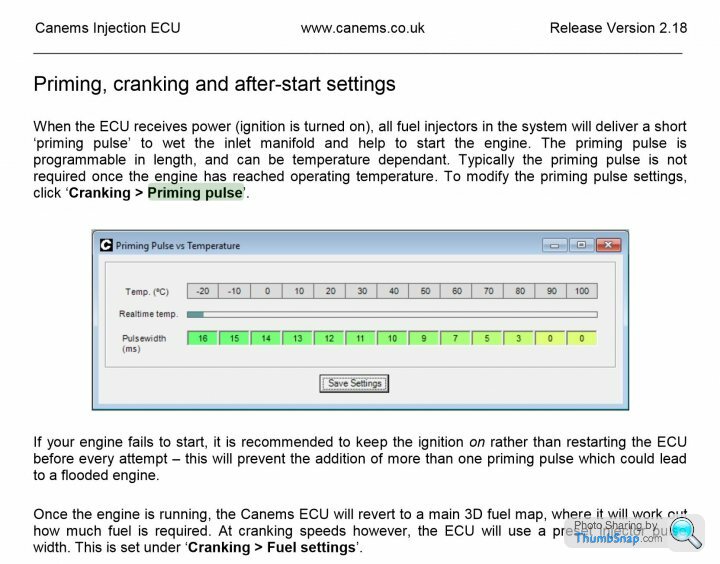
Here we see the exact same priming pulse temperature referenced declining taper in the MegaSquirt software....
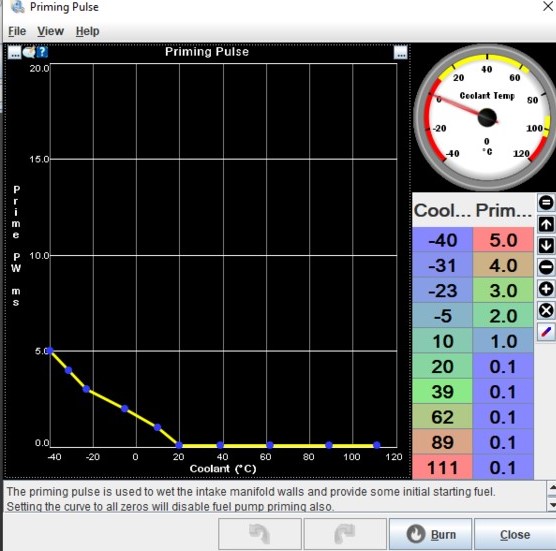
The globally respected Haltech ECU software does exactly the same....

Heres what you get with the equally well respected Link ECU software, once again we see a temperature based declining priming pulse table....

I stand to be corrected an bow to the far superior knowlege of others, but my understanding was Emerald call priming pulse 'Initial Injector Prime' which again sure as hell looks like a declining temperature referenced table to me


All of the above software from Canems, MS, Haltech, Link and Emerald seem to work to the same priming pulse rule, ie the colder the engine is.... the more fuel is injected before the crank. This would indicate to me that all the software developers are unilaterally intending for the feature to be used to aid cold start, and that priming pulse has less to do with purging the fuel of gaseous fuel during hot start and much more to do with helping a cold engine first catch when its cold.
Back in the day on Webers this temperature based priming pulse table was as follows:
1. Three sharp stabs on the throttle pedal when the engine was stone cold
2. Two stabs on a tepid start after the car had been left to cool for a good 2-3 hours
3. One stab if it was only left for an hour or so in cold weather
4. No stabs on a hot engine, because it didn't need it
Anyway, king of the aftermarket ECUs is of course MoTec, my friend has a M600 controlling his twin plug head fully sequential 1969 Porsche 911 outlaw, open the MoTec software and once again we see that that familiar declining temperature based priming pulse table, although MoTec choose to call it the 'Base Pulse'.

So from a good old Weber DCOE that of course has no injector rail to purge, to the ancient but effective Bosch K-Jetronic system I formerly studied back in the early 1990's, and all the way through to MoTec...... we consistently see that splash of fuel being introduced before cranking a cold engine, this all seems pretty conclusive to me

But if anyone is still in any doubt here's the exact same declining temp based priming pulse table from OMEX that everyone else is using, OMEX call priming pulse 'Start Fuel Pulse' but its the exact same thing, ie the fuel you introduce before cranking to prime the engine before attempting the start....

I can provide further examples from other ECU makers if anyone is interested

I'd be interested in seeing more evidence because I'm not convinced you're right.
The ecus I'm familiar with are the emerald, the lucas and MBEs of course, the kms .. none of them give an injection at key on. In my experience all of them require to see some crank movement before firing anything.
The analogy with the carbs is flawed because the pre-start fuelling is driver controlled .. it doesn't happen automatically at key-on, the driver has to control it with their foot on the accelerator.
I think what maybe is throwing a curve ball is a nomenclature issue .. in the emerald software for instance it's called initial prime, but it most certainly is not injected until the crank rotates and the ecu locks onto the missing tooth.
The emerald manual has this to say about the matter:
"The Initial injector prime 2D table at the top of this screen dictates how long (in mS) the initial injection
pulse is. This function is triggered the moment the ECU detects and locks onto the selected trigger pattern, via the crank sensor"
Other than the canems I have no personal experience of any other ecu firing fuel into a stationary engine. Even the megasquirts I have seen don't do it .. As part of setting an engine up you might have cause to switch the ignition on and off multiple times to make config/map changes without actually starting the engine properly and I can't ever remember a change in starting behaviour as a result of doing that, or not doing that.
More (hands-on) research required because my experience (admittedly limited to only a few different makes of ecu) doesn't align with yours.
The ecus I'm familiar with are the emerald, the lucas and MBEs of course, the kms .. none of them give an injection at key on. In my experience all of them require to see some crank movement before firing anything.
The analogy with the carbs is flawed because the pre-start fuelling is driver controlled .. it doesn't happen automatically at key-on, the driver has to control it with their foot on the accelerator.
I think what maybe is throwing a curve ball is a nomenclature issue .. in the emerald software for instance it's called initial prime, but it most certainly is not injected until the crank rotates and the ecu locks onto the missing tooth.
The emerald manual has this to say about the matter:
"The Initial injector prime 2D table at the top of this screen dictates how long (in mS) the initial injection
pulse is. This function is triggered the moment the ECU detects and locks onto the selected trigger pattern, via the crank sensor"
Other than the canems I have no personal experience of any other ecu firing fuel into a stationary engine. Even the megasquirts I have seen don't do it .. As part of setting an engine up you might have cause to switch the ignition on and off multiple times to make config/map changes without actually starting the engine properly and I can't ever remember a change in starting behaviour as a result of doing that, or not doing that.
More (hands-on) research required because my experience (admittedly limited to only a few different makes of ecu) doesn't align with yours.
Gassing Station | Chimaera | Top of Page | What's New | My Stuff





